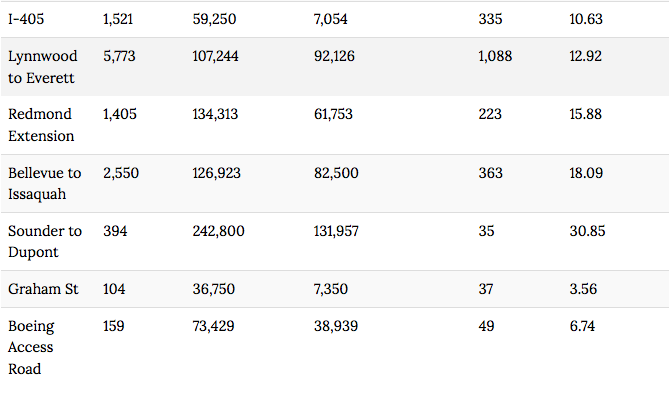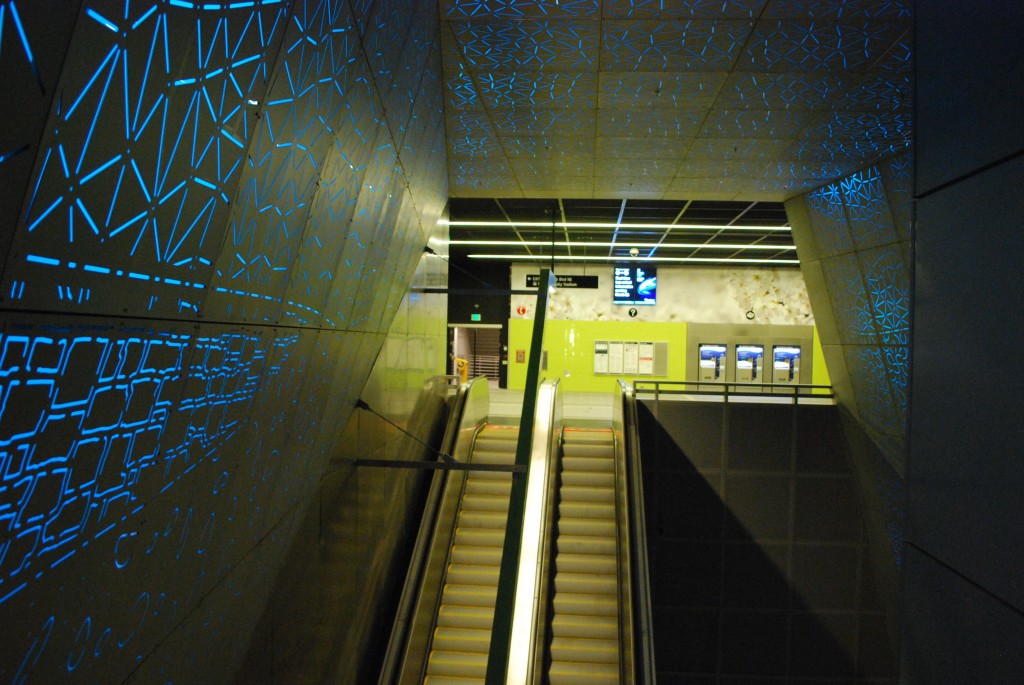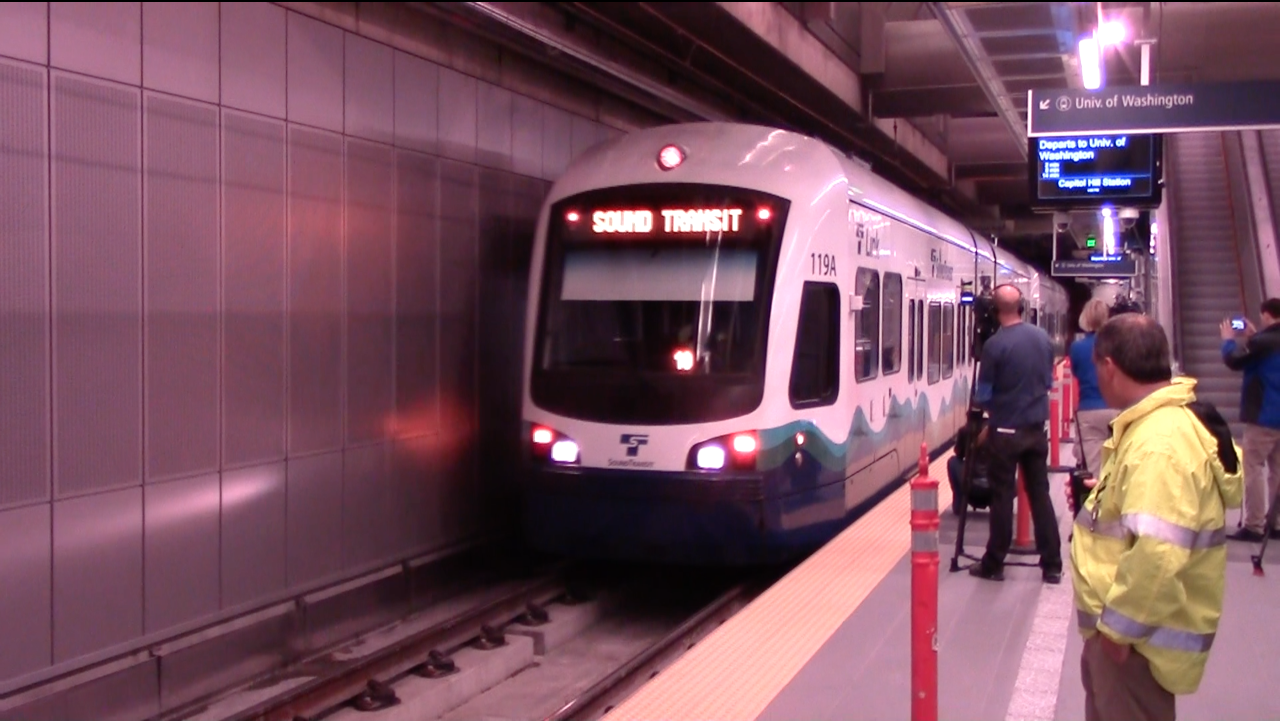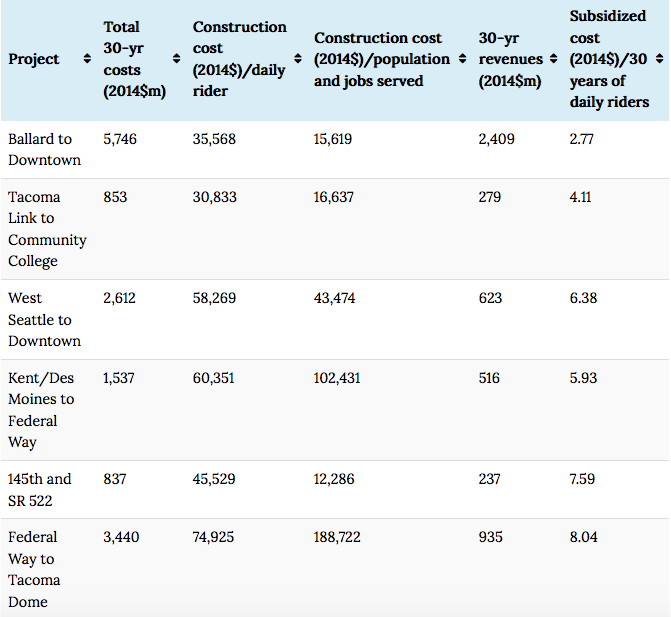My initial impressions of Sound Transit’s draft plan for Sound Transit 3 were that it was weighted too heavily to delivering project to the suburbs first rather than moving forward the highest ridership urban projects first. I suggesting adding in Ballard-to-UW subway line to give Ballard (and the rest of Northwest Seattle) a quicker win, but Sound Transit appears to view that project as an addendum not a prologue, which puts more strain on building the Ballard-to-Downtown line as quickly as possible.
The Transport Politic‘s Yonah Freemark did an excellent analysis of the ST3 package and confirmed what many urbanists suspected: the Ballard-to-Downtown is by far the strongest project on the list and deserves to be built first.

As you can see by the chart, the suburban projects do not perform nearly as well as the urban projects, particularly the Ballard-to-Downtown line. Freemark put it thusly:
When analyzed from a comparative perspective, as shown in the following chart, the benefits of a Ballard-to-downtown line shine through. The project’s construction costs per daily rider and per population and jobs served in the surrounding areas are the second-lowest in the entire system, and much less costly than most of the suburban extensions the agency is prioritizing.
That’s even more relevant when incorporating the operating costs of and the revenues generated by the lines. The total subsidized cost over 30 years per rider—in other words, how many public funds must be expended for each rider after fare revenues to cover the cost of construction and operations—is a good indicator of project performance.
There, the Ballard-to-Downtown line excels, costing the public just $2.77 per rider, the least of all projects being considered. That’s compared to $5.93 for the Kent/Des Moines extension and $15.88 for the Redmond extension, the two lines ST3 prioritizes in the short term.
Freemark also suggested a line of argument:
But Seattleites have the grounds to challenge the way Sound Transit is prioritizing projects. Assuming the project list is relatively final, at minimum the Seattle light rail lines and the Tacoma streetcar extension, which perform better than all the others, should be advanced. They’re the best deal for the taxpayer.
More broadly, residents of Seattle—and people living in any central city in a region contemplating a regional transit investment plan—should make the argument that transportation equity not only means serving many parts of the region, but also maximizing return on investment for taxpayers and picking projects that will attract the most number of transit riders.
So let us make that argument. Transportation equity does entail spending regional dollars wisely and Sound Transit’s own data shows Ballard-to-Downtown is the strongest investment by far. Getting it done in 2038 is not good enough. With a 25-year timeline and $50 billion, we should be able to accrue enough money for the $4.6 billion project much sooner than currently phased. We should probably even come through with the extra cash to build a tunnel crossing of Salmon Bay rather than a less reliable but slightly cheaper moveable bridge to ensure our 100-year investment doesn’t end up getting bogged down anytime a pleasure yacht goes out to sea forcing the bridge to open.

By way of comparison, I ran the numbers on the Ballard-to-UW subway line using Freemark’s method and due to the line’s headscratchingly low prediction of 19,000 to 24,000 daily ridership. The line does not perform as well as the other urban lines, performing slightly ahead of the Redmond extension in cost per rider. Notice how the Redmond extension is the very first rail project built in ST3 while the Ballard-to-UW line isn’t even on the list despite almost identical cost per rider performance in their study. This shows how skewed Sound Transit is toward political considerations rather than performance metrics. I expect the Ballard-to-UW would perform much better in real life, especially with an additional station at 8th Avenue NW. I could see it easily doubling Sound Transit’s lowball prediction.
| Project | Daily ridership | Total 30-yr costs | Construction cost/daily rider | Construction cost/population and jobs served | 30 year revenues | Subsidized cost per 30 years of daily riders |
|---|---|---|---|---|---|---|
| Ballard to UW | 21,500 | 3,557 | 141,488 | 43,960 | 400 | 15.79 |
| West Seattle to Burien | 22,000 | 3,656 | 126,864 | 76,194 | 512 | 15.37 |
| Ballard High School extension | 4,500 | 439 | 80,667 | 24,527 | 84 | 8.49 |
| Madison Street BRT | 10,000 | 129 | 12,900 | 679 | 186 | 0 (-0.61) |
Everyone is asking for faster timelines. Everett even got nearly a dozen state legislators to write a strongly worded letter. However, Seattle can make the strongest case that its lines will improve the financial performance of the whole system. Look no further than the very low $2.77 subsidized cost per rider line from Ballard-to-Downtown which absolutely blows everything else (save the Tacoma Link) out of the water. Building that line first doesn’t just appease impatient Seattleites. It makes the most financial sense.
Doug Trumm is publisher of The Urbanist. An Urbanist writer since 2015, he dreams of pedestrian streets, bus lanes, and a mass-timber building spree to end our housing crisis. He graduated from the Evans School of Public Policy and Governance at the University of Washington in 2019. He lives in Seattle's Fremont neighborhood and loves to explore the city by foot and by bike.



